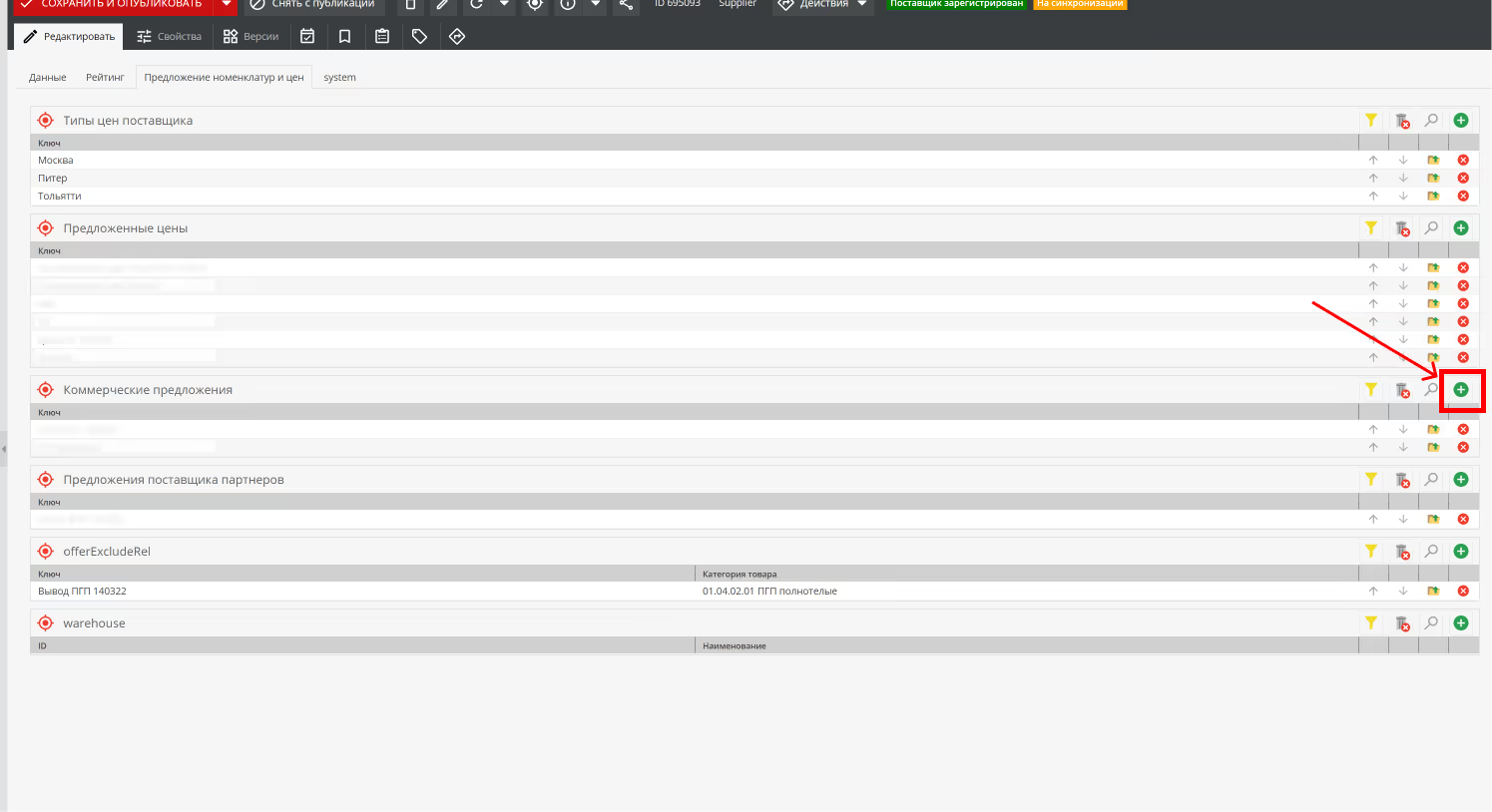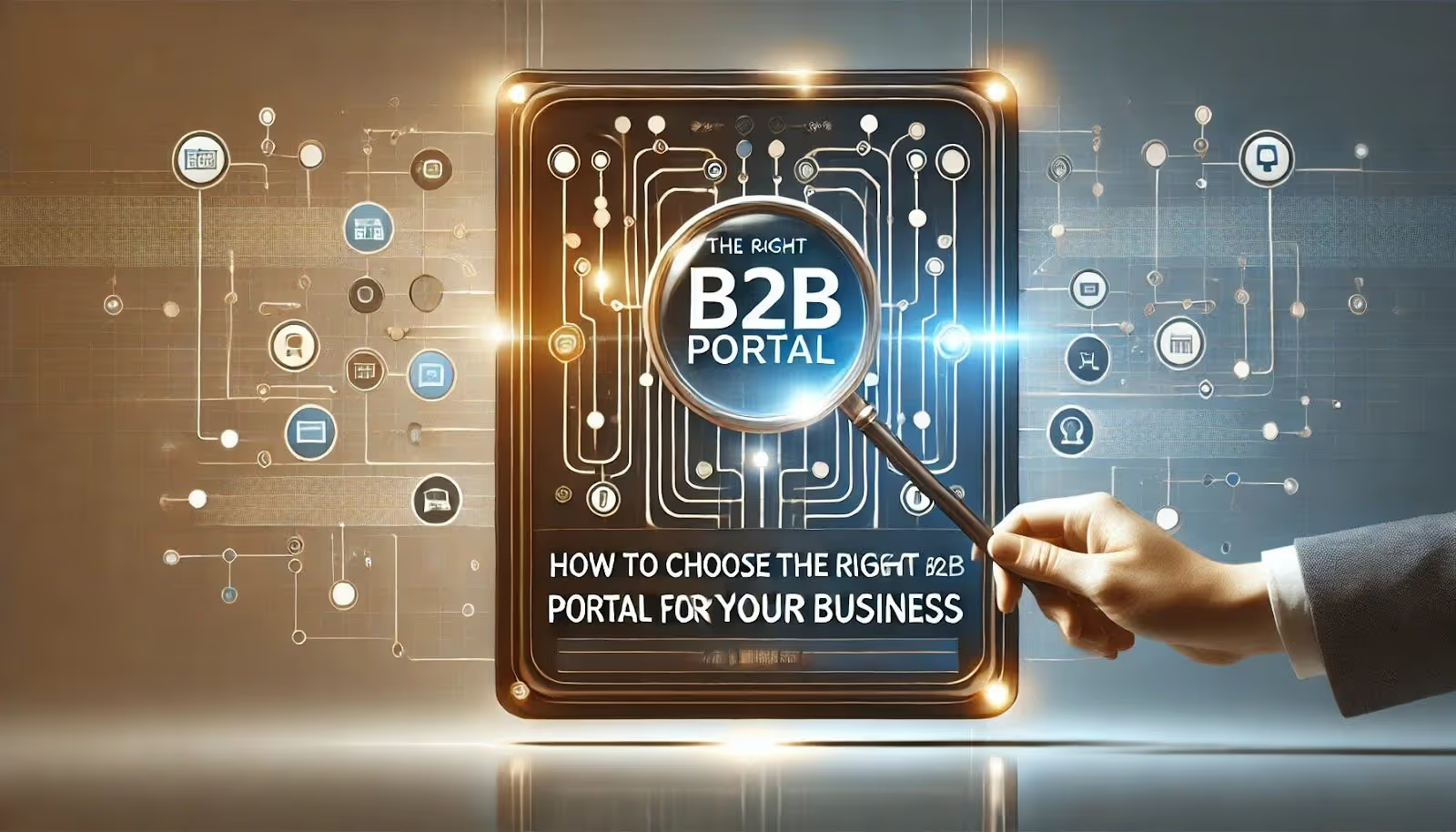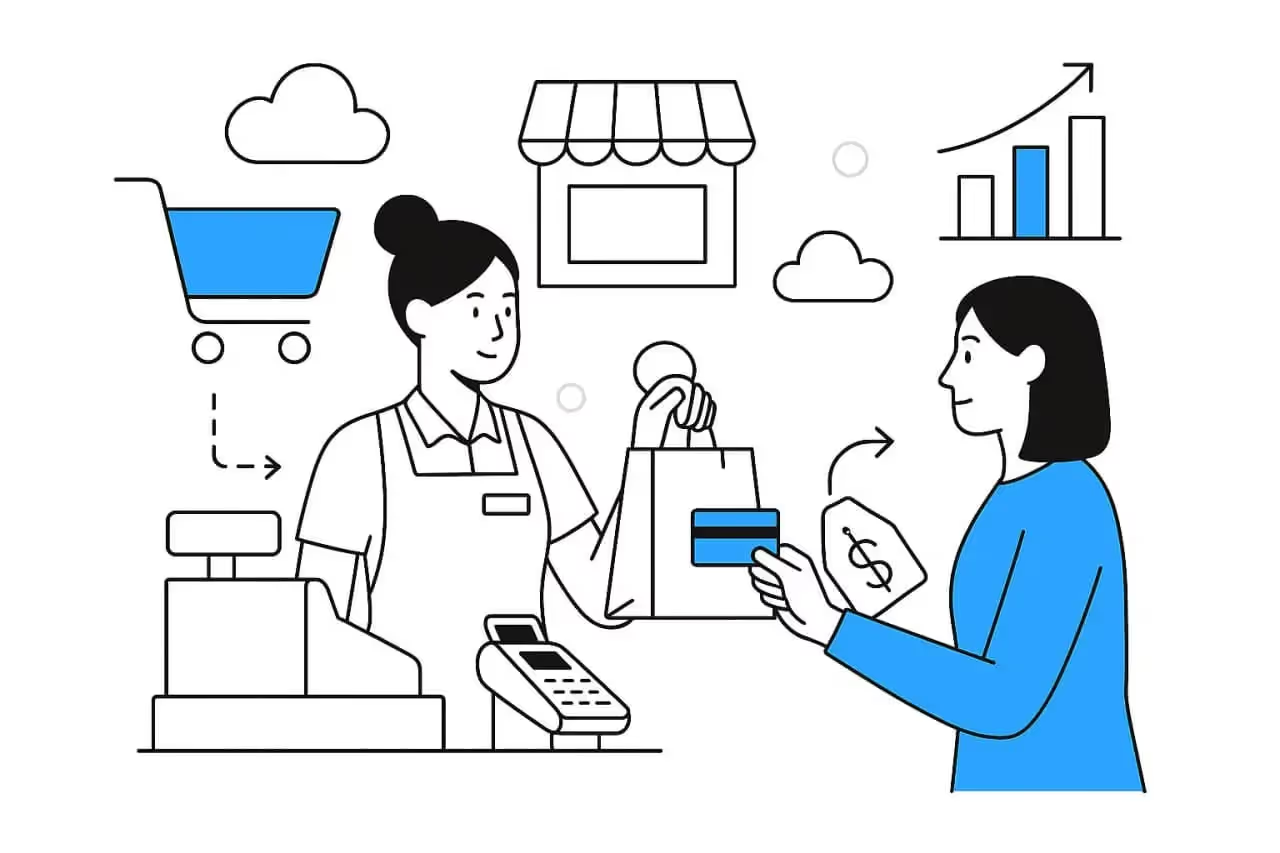A wide range, dynamic product lines, multiple suppliers and a huge number of daily product updates are a common situation for any retailer, no matter what they specialize in. It doesn't matter what the assortment is based on: food products or building materials, dishes or household appliances, cosmetics or toys. In any case, managers have to spend dozens of hours every day to ensure that product information is relevant both in offline retail and online channels.
In this article, experts from the IT integrator KT.team will explain how to increase the speed of processing product information and improve data quality using the supplier portal.
This article will primarily interest retailers who work with 10 or more manufacturers and suppliers of goods. But it can also be useful for representatives of other fields, because there are regular purchases in the medical sector, in construction, and even in IT.
Letters, letters, letters...
Companies often work with suppliers through the usual channels — via email or messengers. A manager is linked to a particular supplier, who remembers the history of interaction, builds relationships with the supplier's representative and monitors new information about the product range.
Up to a certain point, this scheme works smoothly (or almost without failures), and some delays can be ignored. Moreover, they are due to the same workflow.
For example, a supplier offers to add new products to the assortment and sends a selection with them to its manager by email. The manager was busy working with another supplier at the time of receiving the letter, so he responded to the letter only after a few business hours. I opened the file sent, saw that the table did not have enough data to add items to the range, and signaled to the supplier. The vendor manager also doesn't sit in the mail 24/7 — he'll open the email after a few more business hours. He'll spend some more time gathering more information...
Such initial approval of a new product range takes several working days even with a regular supplier and even when one division from each side takes part in the process! And it seems to be uncritical.
But when a retailer is big enough, there are also more complex cases. For example, one of KT.team's clients has different departments responsible for the offline product range and for the online store. Each of them has its own list of requirements for information about new products. But only the category management department (offline shelf) negotiates with the supplier, and all requests from the marketing department (online store) to the supplier go through it.
A very simplified interaction scheme looked something like this.

Each arrow meant additional emails and an additional few hours and days during which a new item did not appear in the retailer's assortment.
The communication participants did not have a single information field. Each of them knew their own piece of information and requirements, but did not come into contact with the requirements of the other communication participants on an ongoing basis and therefore did not remember their needs thoroughly.
A checklist of signals that it's time to implement a supplier portal
Like any information product, supplier portal→ — not a universal solution that will work for everyone and always. It makes no sense to plan its implementation with a view to the future: business is always a confusing environment in which inputs are constantly changing.
From the practice of working with retailers, KT.team specialists have identified several general signals that will suggest that it is time to automate work with suppliers.
- You you sell some kind of product at a price that is close to the purchase price, because we did not receive updated prices from the supplier on time.
This happens when interaction with suppliers is organized via email. Another email with price updates ends up in spam and has a domino effect: your managers did not enter new purchase prices into the company's systems, so no one adjusted the price for end customers... And now, instead of marginal products, you have unprofitable ones on your shelves. An even clearer sign is if this is not the first time such a situation has arisen.
- You have negative reviews appear that “real products do not look like this, as in the photo in an online store (or marketplace).”
Suppliers don't send you updated package photos, or they send them in inadequate quality, or your managers don't have time or forget to update photos on sales channels. As a result, customers order, for example, wipers for their car in red packaging, and receive them in transparent packaging and cannot understand whether they received the right product and who is deceiving them.
- The item has already been added to the shelf, but the warehouse cannot accept it.
The car with the first batch of goods from the new supplier has already arrived at the warehouse, but the warehouse cannot accept it because the systems do not have enough data. For example, there is no information about package dimensions, storage conditions or product proximity. The supplier's manager did not provide this information, the email with it was lost, or the information did not get into the warehouse programs in time — there can be any reason. But the result is the same: you already sell the product online, but it is still out of stock.
You can also make a decision to implement before mistakes start affecting your business: just look at two simple metrics. The first is the number of regular suppliers. Do you work with more than 10—20 companies? It is worth considering implementation. If, at the same time, the number of managers who interact with suppliers (the second metric) is more than three, the interaction process becomes less manageable and more vulnerable.
At the same time, interestingly, the number of SKUs has virtually no effect on the need for the portal. At 10,000 and 100,000. SKU, the probability that it is time to automate the processes of working with suppliers is approximately the same.
A portal to predictability
The goal of the supplier portal is to create a single window and a single space in which both suppliers and all interested departments of the buyer company could work.
The supplier portal automates the main stages of interaction with the supplier and “disconnects” them from a specific manager.
Easy addition of a new product range
- On the supplier's side: the manager picks up a template from his personal account to add a new product range, fills in and then uploads the file. If a supplier has a well-developed IT infrastructure, it integrates its systems with the portal and forms an assortment sample in a familiar interface.
If the file sent is not enough to add items to the retail range or online showcase, or even take them to the warehouse, the portal will immediately signal that there is insufficient data. The system will highlight where and what is missing or what information is provided in inappropriate formats.
- On the retailer's side: employees are notified that a new product range has been released.

They can process and accept or reject both individual items and groups of goods, depending on the current product policy, pricing policy, etc.
Until the retailer's employees process the proposed items, these items will be highlighted in the list. You won't be able to miss or forget.
In total, you don't need to run after suppliers in search of additional information and monitor several communication channels. Instead of a chain of four or more emails, there is a single interface. You can immediately see what information is missing — the supplier can supplement it at the time of loading the product range or by requesting data from other departments.
Transparent changes in current positions
- On the supplier side: supplier managers generate a document with the changed data and upload it to the supplier portal. The portal links the changed items to the items in the catalog through the article and highlights them for the retailer's managers.
- On the retailer's side: items with changes will be displayed on a separate tab and marked as changed by the supplier. The retailer's employees will be able to see exactly which items have been changed, what has changed, and make changes to existing product cards. If integration is set up between the supplier portal and other retailer systems, these changes will be automatically added to the required cards.
Total: information about changes cannot go into spam or get lost in correspondence. Until one of the retailer's managers processes the changes, they will be highlighted on the personal account screen. And if there is integration between the portal and other systems, changes will fall directly into them. The time to update product information is reduced from a few days to 2—5 minutes.
Quick withdrawal of items from the range or disconnect the supplier
- On the supplier side: managers send a document or submit, through integration, a list of products that, for any reason, are intended for withdrawal from stock. The product can be discontinued, replaced with analogues, etc.
- On the retailer's side: the portal automatically links the new file to the current product range, for example, through articles. A list of updated raw items appears on the content manager's page (or anyone responsible for the product range). The manager can only note them all and massively disconnect them from the range.
In total, the absence of some items in the new catalogs from the supplier will not come as a surprise — the retailer will receive information about this in advance and decide how to replace them and how to dispose of the leftovers.

Supplier portal, based on experience KT.team→, gives a win in three metrics:
- speed of interaction with suppliers;
- the cost of interaction;
- quality of interaction.
The deltas for each metric are individual and depend on starting conditions. The more suppliers and the more interactions with them, the greater the savings in the long run.
But on average, in our experience, the speed increases by 3-4 times. The quality of the data provided also increases by 2-3 times.
Implementing a supplier portal: four steps to automation
So you've determined that a supplier portal can be useful for your company. How do we proceed from here?
The first is to take an inventory of the processes you currently have in place for interacting with suppliers:
- Which units are in contact with them?
- How are contracts concluded?
- What data is needed to add items to the retail range offline and online?
- Which ones — for acceptance to the warehouse?
- How do you get information about changes in the supplier's assortment and how do you get information about changes in product parameters (for example, price changes)?
- Are there marketing interactions, such as joint promotions?
- And most importantly, you need to record where there are losses and bottlenecks at the moment.
The second is to start working with the development team that you will trust to implement the supplier portal. This can be either an internal team, if you have a well-developed IT department with the necessary competencies, or an external contractor. You already have a description of the processes and bottlenecks at your fingertips, and you can already show the development team the big picture of what you want to improve with automation.
This does not mean that the development team is guided solely by the data you give at the start. For example, KT.team — before preparing a KP, let alone starting to implement it — conducts several in-depth interviews with the customer's departments. The project team asks questions about the details of the organization of processes, based on previous experience working on similar projects.
This is necessary in order to choose the right solution for your tasks: will the portal be developed on the basis of a boxed product — Adobe Commerce (ex-Magento), Bitrix, Saleor — or whether your processes are so specific that custom development in PHP or Python is better suited.
The third stage is the development of an MVP project that will allow you to achieve the first tangible victory by automating any process of working with suppliers. MVP is usually ready 2-3 months after the start of development.
After that, you can launch the first users to the portal: pilot suppliers (we recommend choosing several companies with which you have the best relations) and managers. They will help optimize the learning process for the following users and improve processes on the portal itself. In our experience, user training takes no more than a week: the manager's personal account on both the buyer's and supplier's sides looks simple and straightforward, as it uses familiar application interface elements.

At the same time (and this is already the fourth stage), you can work out a roadmap for the further development of the portal together with the implementation team. What other processes and functions will you automate, in what time frame will this take place, and what other processes of working with suppliers can be improved?
It should be noted separately here that, unlike, for example, an online store, a supplier portal is a project with a development deadline. Even if you transfer 10, 20, 30 processes of working with suppliers into a single window, at some point, undigitized processes will end. And all that will remain is support for the portal itself and related integrations.
By the way, to integrate the supplier portal with the company's other systems, we usually recommend that our customers use an intermediate integration layer — an ESB bus. This solution will allow you to integrate any system regardless of the data stack and format, and not rewrite integrations every time the systems are updated or the way they store data changes. You can read more about ESB in the articles KT.team→ blog.
What can be done before implementing the portal?
It will take 2-3 months from the start of work to the launch of the first functions of the supplier portal. Plus, the stage of selecting a developer, negotiating, concluding an agreement... And we need to somehow improve processes right now. Is there anything you can do before automation?
Sure.
For example, create a general email to interact with suppliers and route emails to specific managers. This way you will get rid of a situation in which the absence of a specific manager (getting sick, going out of town without communication, quitting) leads to the loss or untimely updating of information from suppliers. Now letters will be sent to a single address and sent to managers who are in touch right now.
Another simple step is to set up messenger notifications. A new email “drops” onto a corporate mailbox created to work with a supplier, and the manager receives an additional notification about it. It is becoming more difficult to lose such a letter.
You can also create kanban boards in your systems. A new letter from the supplier will trigger the automatic creation of a task and the appointment of a responsible manager to this task. You can set notifications on the Kanban board if a task stays in some status for too long.
These tools will reduce losses and quickly optimize some of the processes for working with suppliers before or in parallel with development.








